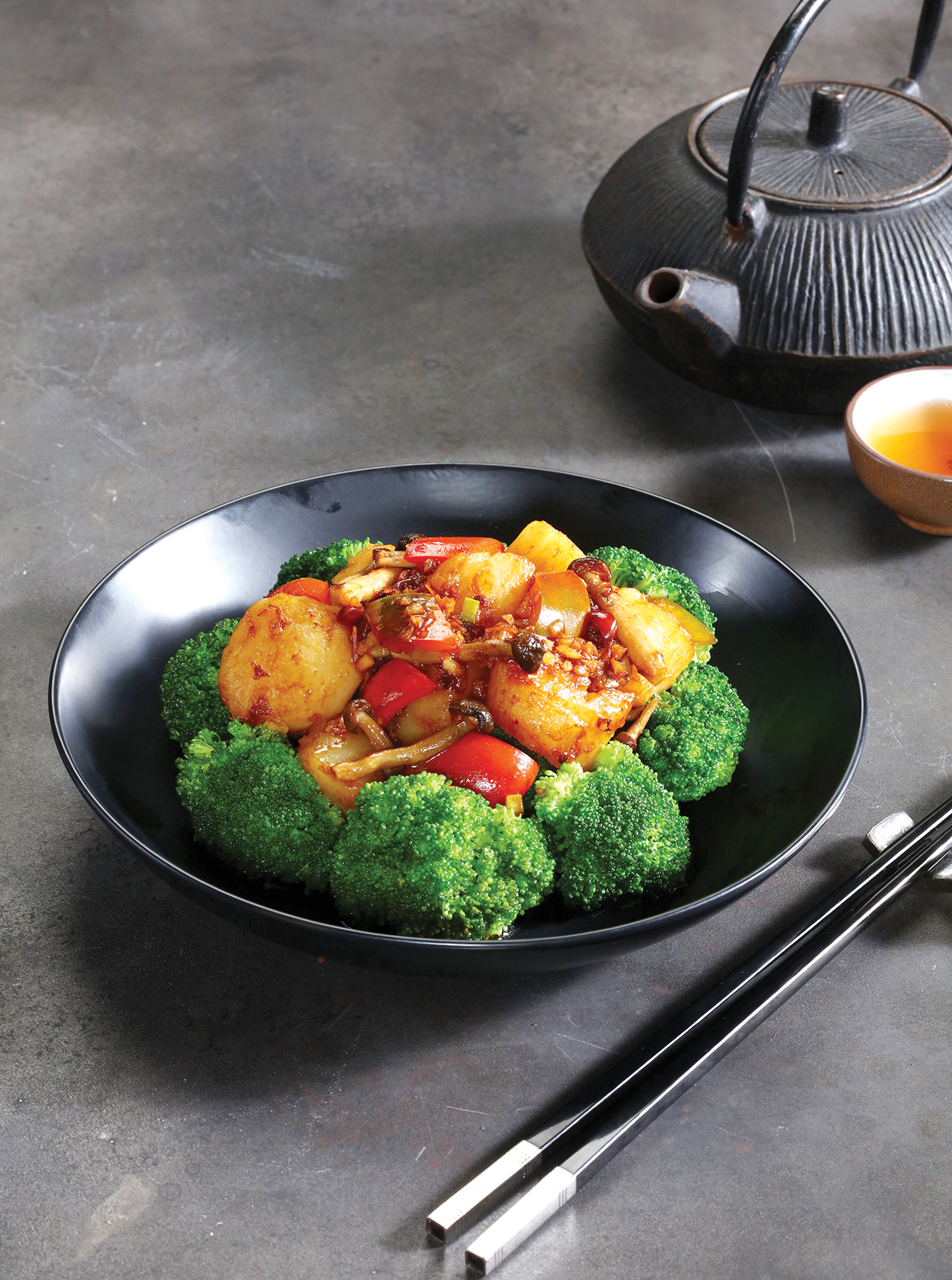Why you can't go wrong with Cantonese
And here's more you haven't had before in your favorite dim sum place
By Jules Vivas
At A Glance
- 'We take pride in our all-you-can-eat dim sum, but we also thought that people might be tired of it. More people are dining out now, so we're giving our patrons something new.'

Relations between the Philippines and China span over several centuries and have been, for the most part, recent territorial disputes notwithstanding, cordial and warm. Before the Spanish colonization, the existence of various pre-colonial Philippine kingdoms was acknowledged by Imperial China. The Chinese Emperor would even receive envoys from Filipino rajahs, datus, and sultans.
This long history of friendship between the orients is mainly reflected in the kitchen. Chinese influence in Philippine cuisine goes deep. Chinese immigrants, a lot of whom settled in the bustling trade hub of Manila, played a significant role in the development of the Filipino culinary landscape. From hearty broths to tasty noodles, steamed fried dishes to dumplings, Chinese fare is enjoyed by the local palate, especially in places where Filipino of Chinese descent, often called Chinoys (a portmanteau of Chinese and Pinoy), reside.

Today, there are no shortages of Chinese restaurants in Metro Manila. Among the most famous, and consistently regarded as one of the best spots for Cantonese-style dishes, is Jasmine at New World Makati Hotel. Despite specializing in lauriat or banquets and eat-all-you-can dim sum, Jasmine, to cope with the post-pandemic times, came up with a new set of a la carte plates that span from appetizers to desserts.
“We take pride in our all-you-can-eat dim sum, but we also thought that people might be tired of it. More people are dining out now, so we’re giving our patrons something new,” says New World Makati Hotel general manager (GM) Nantha Kumar.

Appetizers include deep-fried stuffed crab claw, soft-shell crab with mango salsa, and sweet chili in bao bun, as well as fried soft-shell crab with salt, pepper, and cilantro. What stands out, at least in my opinion as a truffle lover, is the truffle duck dumpling, a medley of earthy, nutty, meaty, and savory, in a bite.
The entrées, meanwhile, are the fried prawn “Peking style,” scallop with broccoli and X.O. sauce, and the Sichuan-style poached beef tenderloin with Chinese cabbage and bok choy. A staple that you wouldn’t go wrong ordering is the wok-fried beef tenderloin, black pepper, and taro cream in clay pot.

New World Makati Hotel general manager Nantha Kumar’s favorite, the crispy shrimp ball with cheese, is another excellent entrée with its layer of creamy and mild umami flavors. The Malaysian GM rates it an 11 out of 10, and rightfully so.
Those dining the Filipino way, with the rice taken together with the ulam (main courses), would find the seafood rice pop in clay pot a perfect match to everything. The hearty porridge-like dish that consists of seafood fried rice with conpoy (dried scallop), egg white, pine nuts, E-fu noodle, mapo tofu, and seafood, could stand on its own—as it should, as rice is normally served last in a Chinese meal, consumed only “to fill the empty corners of the stomach.”

Two interesting plant-based dishes are the crispy stuffed eggplant in sweet spicy sauce, which has this pleasant spicy-sweet taste, and the deep-fried crispy golden shiitake and enoki mushrooms. Both are very comforting and work well as sides.
Other promising dishes are the deep-fried spareribs with Chang Kong vinegar sauce, sliced chicken in black pepper sauce, and Taiwanese-style chicken in clay pot. Mango pudding and the Chinese egg tart are the additions for dessert.

Apart from the a la carte offerings, four new cocktails were also created. First is the Ying Yang, a smoky and spicy mix of Martin Miller’s gin, elderflower cordial, chili, egg white, lemon juice, and rosebuds tea syrup. Those who prefer a more subtle drink should opt for the Lapsang Cooler, a blend of Pierre Ferrand 1840 cognac, black tea, basil, ginger, lemon juice, and sugar syrup. The taste of lapsang tea is so pronounced you could hardly tell there’s liquor.

The other two concoctions are the Jasmine Bloom, comprised of Christian Drouin gin, Mancino Bianco vermouth, jasmine tea, lime juice, egg white, and honey, and the Xiāng Máo Drop, a Boutique-y rum sign blend with lemongrass, fresh mint, lime juice, and tie guan yin tea syrup. These drinks are made by the world-class mixologists of the hotel’s very own Bar Rouge.

Aside from the improvements on the menu of Jasmine, New World Makati Hotel is implementing changes in the products and facilities of Café 1228 and Bar Rouge.
manila.newworldhotels.com